Indigenous Wisdom
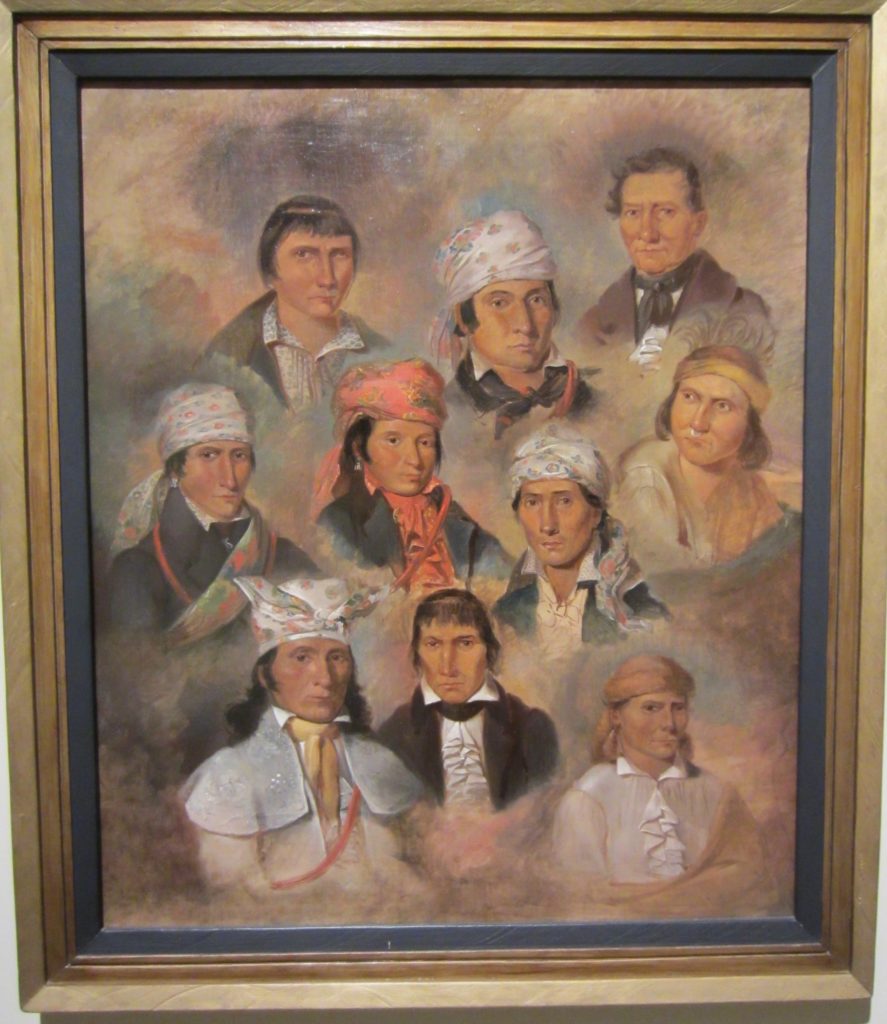 Eva Marie Carney, the mother of Elise Cohen, an outstanding piano student of mine, got me interested in Native American history many years ago. In addition to being a busy immigration lawyer in Washington, Eva is a dual citizen of the Citizen Potawatomi Nation and their District #2 Legislative representative. Like her mother, Elise is a Citizen Potawatomi, and recently got her doctorate in clinical psychology. In 2014 I wrote them that my friend Marjo and I had seen a painting titled “Ten Potawatomi Chiefs” at Crystal Bridges Museum in Arkansas. That painting, shown above, was done in 1837 by George Winter (1809-1876), who witnessed the Potawatomi chiefs at their Council meeting at Lake Kee-wau-nay in northern Indiana, a year before the forced migration of their tribe 660 miles from Indiana to Kansas.
Eva Marie Carney, the mother of Elise Cohen, an outstanding piano student of mine, got me interested in Native American history many years ago. In addition to being a busy immigration lawyer in Washington, Eva is a dual citizen of the Citizen Potawatomi Nation and their District #2 Legislative representative. Like her mother, Elise is a Citizen Potawatomi, and recently got her doctorate in clinical psychology. In 2014 I wrote them that my friend Marjo and I had seen a painting titled “Ten Potawatomi Chiefs” at Crystal Bridges Museum in Arkansas. That painting, shown above, was done in 1837 by George Winter (1809-1876), who witnessed the Potawatomi chiefs at their Council meeting at Lake Kee-wau-nay in northern Indiana, a year before the forced migration of their tribe 660 miles from Indiana to Kansas.
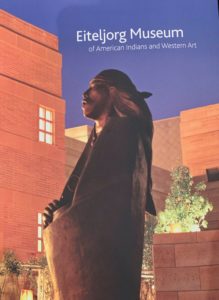 In September Marjo and I encountered the Potawatomi Chiefs painting again in an exhibit at the Eiteljorg Museum of American Indians and Western Art in Indianapolis. Having visited museums in several Western states, as well as the American Indian Museum in Washington DC, we didn’t expect to find such depth and breadth at a museum we had never heard of before. The collection was especially well curated: a plaque for each work identified its context and significance; written narratives in each gallery showed how the works were related. In this album of photos I took you’ll see what I mean. The Eiteljorg had just hosted its annual Quest for the West® Art Show and Sale. Some of the artworks in the album show asking prices; those with red dots were sold. Indiana is a state that truly honors Indians.
In September Marjo and I encountered the Potawatomi Chiefs painting again in an exhibit at the Eiteljorg Museum of American Indians and Western Art in Indianapolis. Having visited museums in several Western states, as well as the American Indian Museum in Washington DC, we didn’t expect to find such depth and breadth at a museum we had never heard of before. The collection was especially well curated: a plaque for each work identified its context and significance; written narratives in each gallery showed how the works were related. In this album of photos I took you’ll see what I mean. The Eiteljorg had just hosted its annual Quest for the West® Art Show and Sale. Some of the artworks in the album show asking prices; those with red dots were sold. Indiana is a state that truly honors Indians.
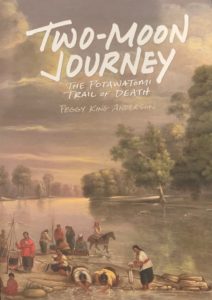 A woman in the gift shop recommended books for me that focused on the Potawatomi Nation. I finished Two-Moon Journey last night and found it full of wisdom. It’s the story of Simu-quah, a young girl who endured the “Trail of Death,” a forced two-month-long march with her family in 1838. The march was a direct result of the Indian Removal Act of 1830, advocated by President Andrew Jackson. Simu-quah displayed inspiring spiritual growth by listening to one of the grandmothers: “There is a time to come when your people will lose their joy, the spirit part of their beings. This time will be a time of great sorrow. And in that time I will bring you the white corn that will make what has been broken whole. In that time of sorrow, those who learn the secrets of the white corn will be able to call back the wonder of life, the laughter of children, and the joy of the dance.”
A woman in the gift shop recommended books for me that focused on the Potawatomi Nation. I finished Two-Moon Journey last night and found it full of wisdom. It’s the story of Simu-quah, a young girl who endured the “Trail of Death,” a forced two-month-long march with her family in 1838. The march was a direct result of the Indian Removal Act of 1830, advocated by President Andrew Jackson. Simu-quah displayed inspiring spiritual growth by listening to one of the grandmothers: “There is a time to come when your people will lose their joy, the spirit part of their beings. This time will be a time of great sorrow. And in that time I will bring you the white corn that will make what has been broken whole. In that time of sorrow, those who learn the secrets of the white corn will be able to call back the wonder of life, the laughter of children, and the joy of the dance.”
Sounds like we need to learn the secrets of the white corn right now! The pandemic has been a time of suffering; we need more wonder, laughter and joy! Simu-quah understood that she needed to take ears of corn from her home in Indiana and keep them safe throughout their arduous journey. Sure enough, she was able to plant corn in her new home in eastern Kansas. As she planted the last kernel, she remembered the red-bearded soldier, Crider, who had been so fearsome. He had taught her the hardest lesson of all, the lesson of forgiveness. Yes, we need some of that, too.
Two books that will teach me other aspects of Indigenous life are The Native Americans and Braiding Sweetgrass. Robin Kimmerer is also a Citizen Potawatomi. Update: three weeks after writing this post I have almost finished reading Braiding Sweetgrass. It contains SO MUCH WISDOM! Robin Wall Kimmerer has put me in touch with Mother Earth and given me new concerns about what we are doing to Her. Here is my review. She has also led me to ponder two more books I read soon after they were published:
Summer Moon is about the Comanche Indians in Texas; Flower Moon is about the Osage Indians in Oklahoma. Both tribes were familiar to those of us who grew up in Phillips, Texas. Frank Phillips, for whom our town was named, was NOT one of the bad guys who cheated the Osage Indians out of their oil rights. He got along with them well and was honored to be an Honorary Osage Chieftain. Phillips also founded the Woolaroc Museum and Wildlife Preserve.
In the process of writing this post I discovered Ah-Tah-Thi-Ki Museum, a Smithsonian affiliate on the Big Cypress Seminole Indian Reservation in Clewiston, FL, just an hour-and-a-half away from where I live. Named in the Seminole language “a place to learn and remember,” Ah-Tah-Thi-Ki hosts a large collection of Native American artifacts and archival items, expressing the living history and culture of the Seminole peoples who lived in Florida long before we came. I also found that I can learn Ojibwe, the language of a tribe related to the Potawatomi, by subscribing to the “Ojibwe Word of the Day” on YouTube. Hurray! a new course of study! Further recommendations are welcome.
When I was in school, our October holiday was “Columbus Day.” Now it’s “Indigenous Peoples Day.” I believe that we all need to learn more from the people who were here first–those who lived close to the land and took better care of it than we do. We displaced these people, just as Jews returning to Palestine after WWII displace Arabs whose families had lived there for centuries. Monday, October 11, is a day to recognize the Native people and influences that still are all around us. One way to celebrate would be to contribute to the Kwek Society, which Eva Carney founded in 2018. The Society supports Native students and communities across North America with period supplies. No student should miss school because they are on their moon time and don’t have necessary supplies. Kwek’s ultimate goal is to eliminate period poverty in Native communities. Donate here; I did.
Update: On October 8, I sent this email to Molly Sass, Assistant to the President of Eiteljorg:
My friend and I spent about three hours at your museum on Saturday morning, September 18 and enjoyed it thoroughly. We found the people at the front desk and the gift shop particularly helpful and the exhibits were delightfully thrilling. Here is a blogpost I just published about our experience: https://mksconbrio.com/art/indigenous-wisdom/. Thank you for educating us about Native Americans and the art they do and have inspired and challenging us to learn more.
Her reply on October 11:
Good morning, Martha.
Thank you for taking the time to send your kind email. I’m so thrilled you and your friend were able to visit the Eiteljorg Museum recently. And, thank you for sharing your positive experience with others. I will certainly pass your email along to our frontline staff and to our marketing team as well. It’s so nice to hear when our visitors have enjoyed their visit. I hope you come and visit with us again sometime.
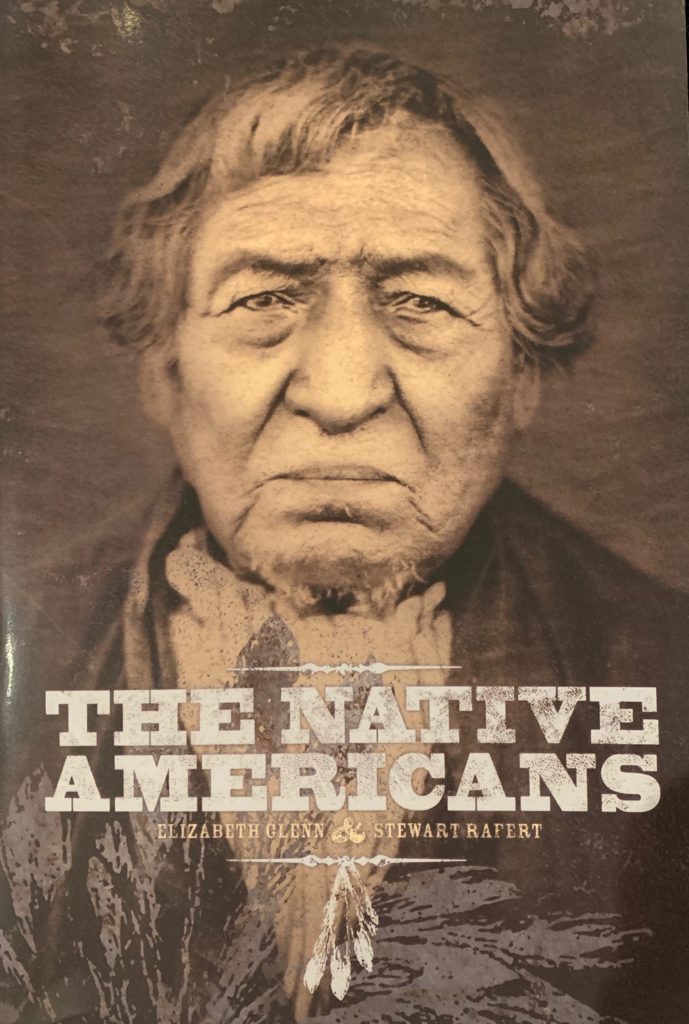
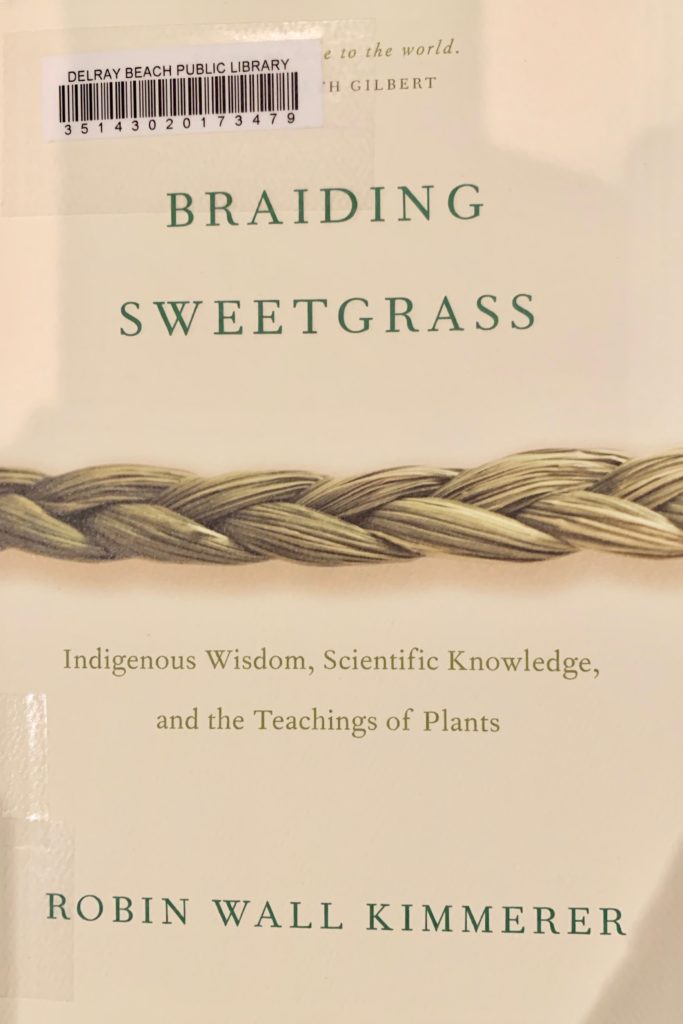
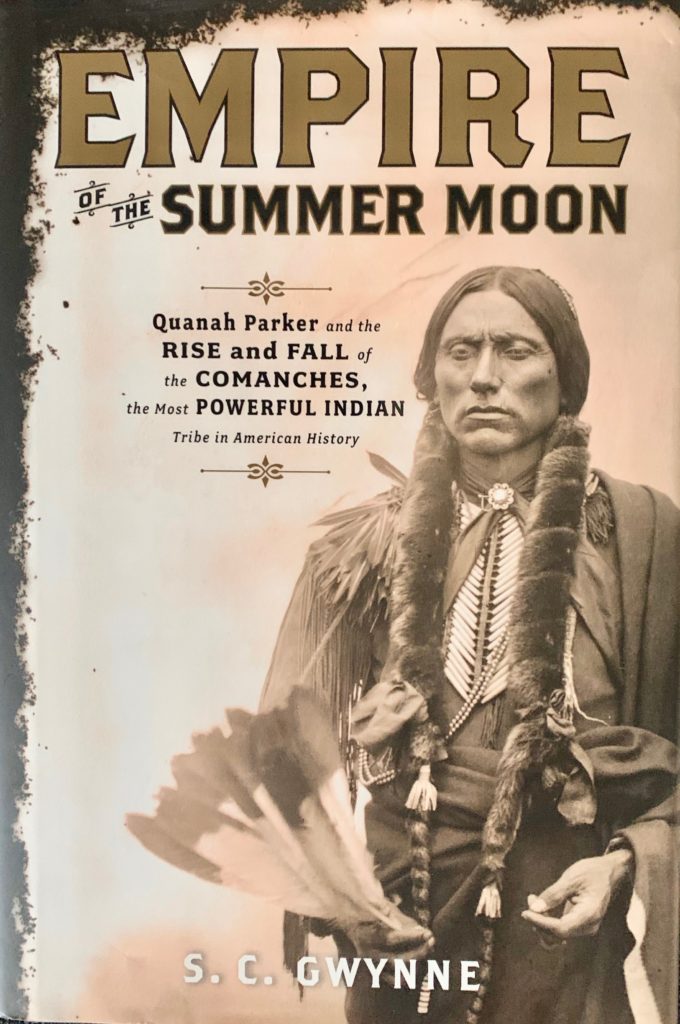
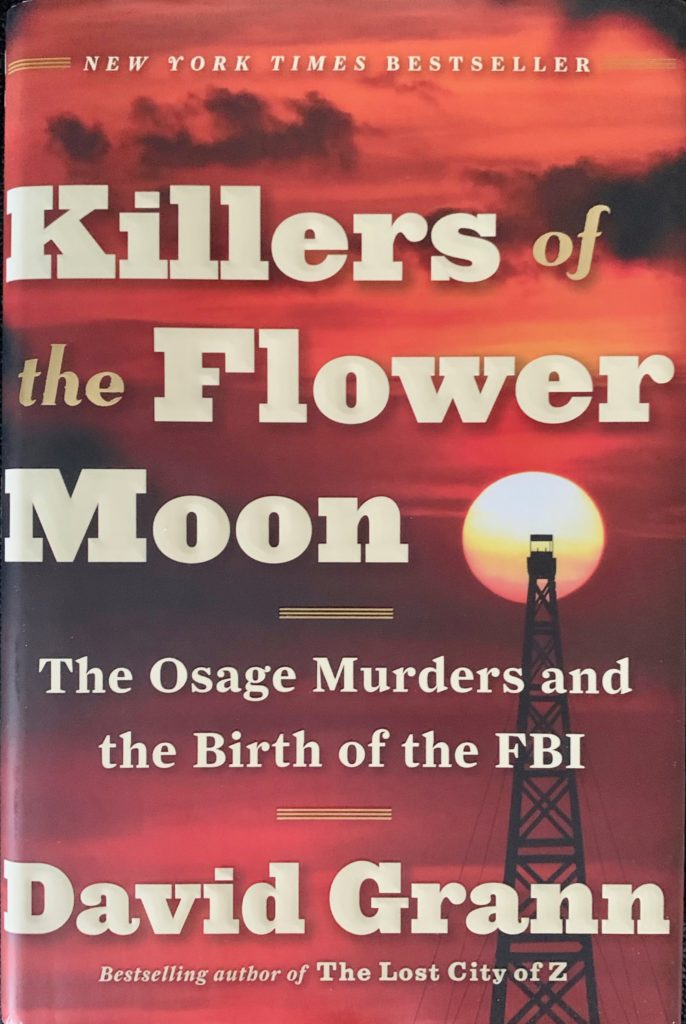
Leave a Reply